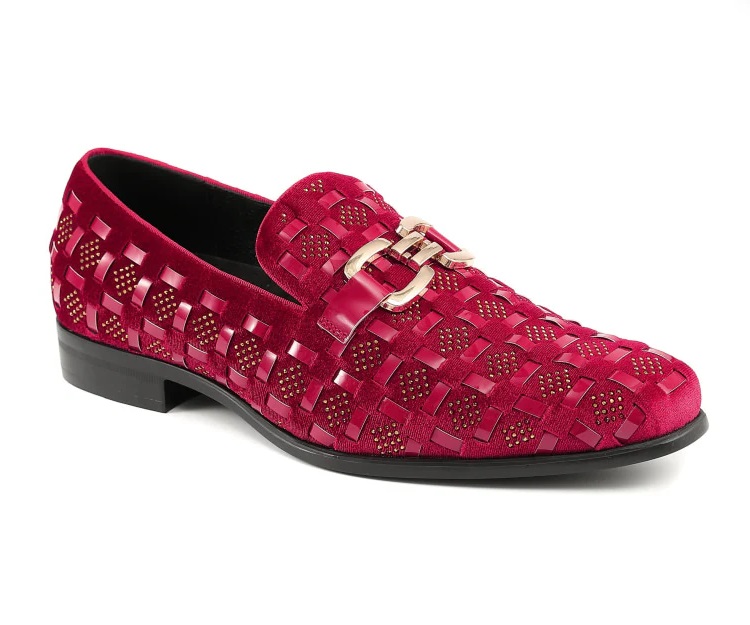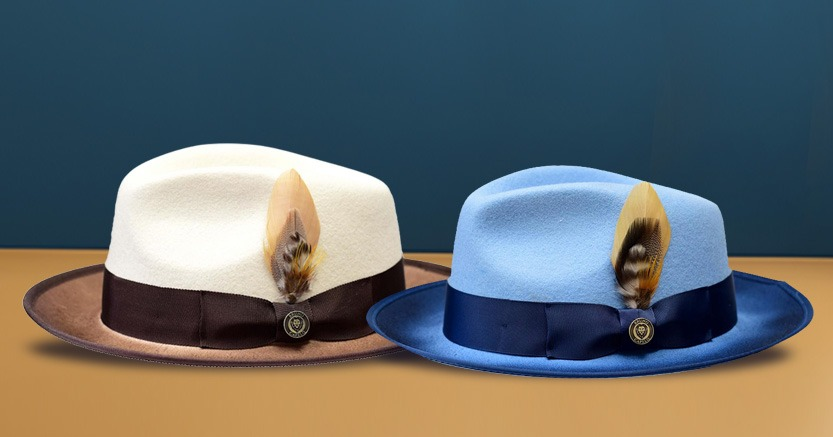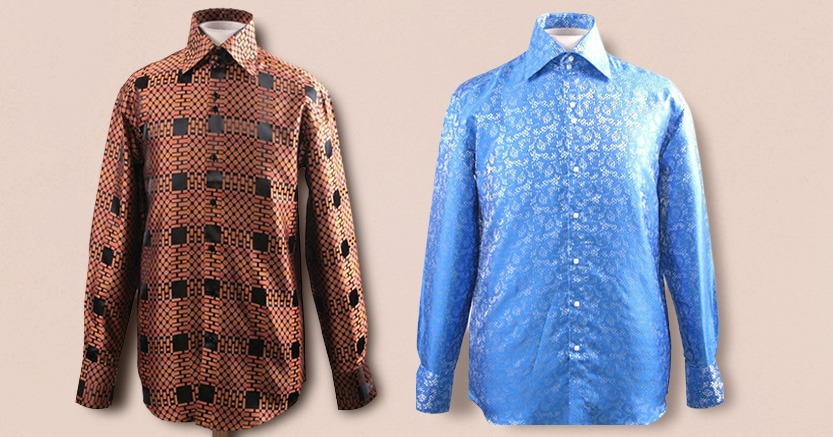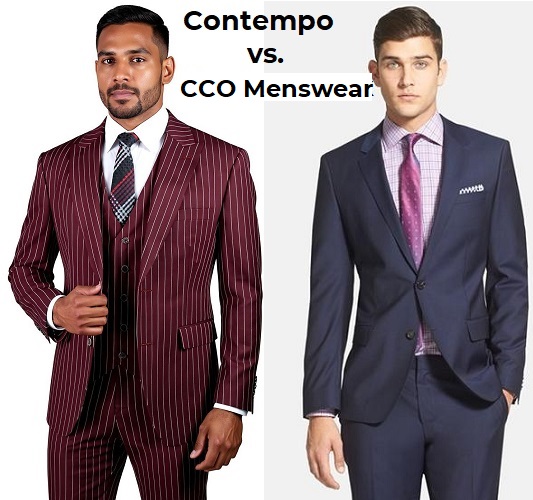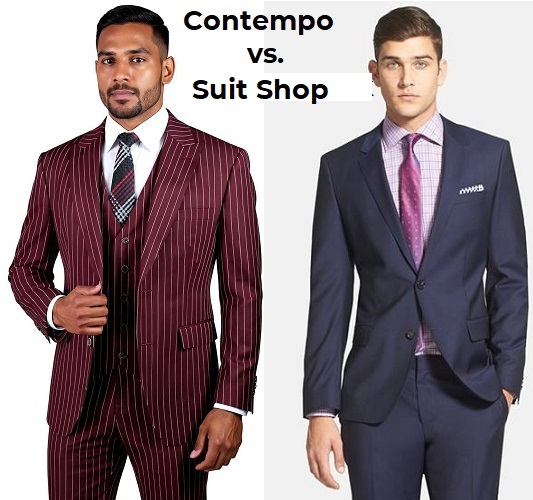Jun 23, 2024
The Evolution of Men's Suits: From Classic to Contemporary
The Evolution of Men's Suits: From Classic to Contemporary
For decades, men's suits have been a wardrobe staple, representing sophistication, style, and professionalism. While the classic suit may have remained largely unchanged to the untrained eye for many years, the ever-evolving fashion industry has seen an influx of contemporary styles and designs that continue to push the boundaries of traditional suiting. From the classic three-piece suit to slim-fit and skinny options, the evolution of men's suits has been a fascinating journey. This transformation has been driven by a range of factors, including changes in fashion trends, advancements in textile technology, and the rise of modern tailoring techniques. Let's take a closer look at the evolution of suit styles, exploring how they have transformed from classic to contemporary, and the various factors that have contributed to this shift. Whether you're a fashion enthusiast or someone looking to update their wardrobe, this article is sure to provide some insight into the world of men's suiting.
The classic suit: its origins and features
The classic suit, also known as the lounge suit, originated in the late 19th century and was originally worn as informal wear for men.
It often came with a jacket, pants, and a waistcoat that was often paired with a top hat and walking stick. The suit was made from high-quality wool and designed to be comfortable, durable, and easy to wear. Remember, synthetics didn't exist back then. During the 1930s, mens suits with long jackets made their appearance. They became commonly known as zoot suits.
The classic suit has a few defining features that have remained largely unchanged over the years. The jacket is usually single-breasted, has two or three buttons, and features notched lapels. The pants are typically straight-cut with a flat front, and the vest, if worn, is single-breasted and has four buttons. The classic suit is mostly worn in neutral colors such as navy, black, or grey, and is a timeless and versatile option for any occasion.
Despite its simplicity, the classic suit has remained a popular wardrobe staple for men around the world. Its understated elegance and versatility make it a perfect choice for formal events, interviews, and everyday wear. However, as fashion trends have evolved over the years, so too has the classic suit.

The rise of the modern suit in the 1920s and 1930s
The 1920s and 1930s marked a significant shift in men's fashion. The end of World War I saw a move away from the traditional and formal styles of the past like you would see in the show "Downton Abbey", and a move was towards more relaxed and informal clothing. This led to the rise of the modern suit as we know it, which was characterized by a looser fit, softer fabrics, and a more casual style. Think of the hit show "Boardwalk Empire" and you get the idea.
The 1930s saw the introduction to double breasted suits for men which became quite popular. They gave a whole dimension to style which didn't exist before. The combination of the wide peak lapels and wrap front style will the two rows of buttons just stand out in comparison to a single-breasted style suit.
The modern suit featured a single-breasted jacket with a notched lapel, a two-button fastening, and a more relaxed fit. The trousers were often wider and looser than before, with pleats and cuffed bottoms becoming popular. They were usually worn as 3 piece suits since they were still universally worn with a vest. The new style was a stark contrast to the fitted, formal suits of the past, and represented a new era of fashion that prioritized comfort and ease of movement.
The modern suit gained popularity by Hollywood actors such as Cary Grant and Clark Gable, who brought a new level of style and sophistication to men's fashion. The new style was also embraced by working-class men, who appreciated the more relaxed and practical approach to suiting.
The influence of Hollywood on men's suit styles in the 1950s and 1960s
The 1950s and 1960s saw another shift in men's fashion, driven in part by the influence of Hollywood. The slim-fit suit became popular in the late 50s, with actors such as Marlon Brando and James Dean sporting the new style on and off the big screen.
The slim-fit suit was characterized by a more fitted jacket with slimmer lapels and a tapered waist. The suit pants were also slim-fitting, with a tapered leg, lower waist, and a shorter hemline. The new style was a departure from the looser, more casual suits of the past, and represented a new level of sophistication and style.
The new style was popularized by fashion icons such as the Rat Pack, who embodied the cool, sophisticated style of the era. The slim-fit suit became a symbol of rebellion and anti-establishment, embraced by young men around the world. It was all about Vegas.
The bold and colorful suits of the 1970s
The 1970s saw another shift in men's fashion, with bold colors and patterns becoming popular. The disco era brought with it a new level of flamboyance and extravagance, and men's suits were no exception. Fashion was the word of the day.
The new style was characterized by bright colors such as orange, yellow, and green, as well as bold patterns like paisley and stripes. The lapels became wider, and the trousers were flared, creating a more dramatic silhouette.
The new style was popularized by icons such as Elton John and David Bowie, who embraced the new level of flamboyance and individuality. The bold and colorful suits of the 1970s represented a departure from the classic and understated styles of the past, and represented a new level of individuality and self-expression.
The power suit of the 1980s
The 1980s saw another shift in men's suiting, characterized by the rise of the power suit. The new style was a symbol of success and wealth, and was characterized by a more structured and formal look.
The power suit was usually a pinstripe double breasted suit with broad shoulders and padded lapels. The trousers were pleated and cuffed, and the overall look was designed to be authoritative and commanding. The bold stripe fabric is what should immediately come to mind.
The new style was popularized by icons such as Gordon Gekko, the protagonist of the movie Wall Street, who embodied the greed and excess of the era. The power suit represented a new level of masculinity and dominance and was embraced by businessmen and professionals around the world.
The minimalist suit of the 1990s and early 2000s
The 1990s and early 2000s saw a return to the classic and understated styles of the past. The minimalist suit became popular, characterized by a more simplified and streamlined look.
The new style was characterized by a single-breasted jacket with a two-button fastening and narrow lapels. The slacks were straight-cut with a flat front, and the overall look was designed to be clean and unfussy.
The new style was popularized by icons such as Steve Jobs, who embraced the minimalist look as a symbol of creativity and innovation. The minimalist suit represented a new level of simplicity and elegance and was embraced by men around the world.
Contemporary suit trends: slim fit, double-breasted, and more
Today, men's suiting is more diverse than ever before. Contemporary suit trends include slim-fit suits, double-breasted jackets, and more. It almost seems like you can get any style from the past and wear it today.
The slim-fit suit has remained popular, characterized by a more fitted jacket and trousers. These have been adopted by most young men under the age of thirty. The double-breasted jacket has also made a comeback, with a more modern and streamlined look.
Other contemporary trends include the use of bold patterns and textures, such as plaids, checks, and tweeds. Technical fabrics and blends are also becoming popular, offering increased comfort and durability.
Custom-tailored suits have also become more popular for those who can afford them, offering the ultimate in personalization and fit. Men can now choose from a wide range of fabrics, styles, and details, creating a suit that is truly unique to them.
The future of men's suits
As fashion trends continue to evolve, it's difficult to predict the future of men's suiting. However, it's clear that there will always be a place for the classic suit, which represents timeless elegance and sophistication. As long as people will work in a traditional style office, the classic style will continue to be needed.
Innovations in textile technology and tailoring techniques will continue to push the boundaries of traditional suiting, offering new levels of comfort, durability, and style. Most suits these days use less and less hand tailoring methods because of the new machinery. It allows factories to manufacture them in a fraction of the time which lowers costs.
The rise of sustainable fashion will also impact the world of men's suiting, with more eco-friendly fabrics and production methods becoming popular.
Overall, the future of men's suiting is likely to be diverse and dynamic, reflecting the changing needs and preferences of men around the world.
Conclusion
The evolution of men's suiting has been a fascinating journey, driven by a range of factors including changes in fashion trends, advancements in textile technology, and the rise of modern tailoring techniques. From the classic lounge suit to the slim-fit and contemporary styles of today, men's suiting has continued to evolve and adapt to the changing needs and preferences of men around the world.
Whether you prefer the understated elegance of the classic suit or the bold and colorful styles of the 1970s, there is a suit out there for everyone. And with the rise of custom suiting, men can now create a suit that is truly unique to them, reflecting their individual style and personality.
As we look to the future, it's clear that the world of men's suiting will continue to evolve and adapt, offering new levels of comfort, durability, and style. Whether you're a fashion enthusiast or someone looking to update their wardrobe, there has never been a more exciting time to explore the world of men's suiting.



